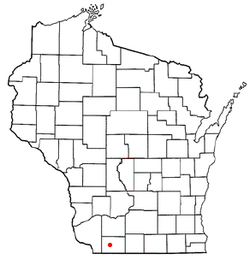Shirley Wind Farm opponents see ray of hope
Doug Schneider, USA TODAY NETWORK-Wisconsin 8:35 p.m. CDT July 3, 2016
A group of Brown County lawmakers has given initial approval for items sought by Shirley-area residents who say low-frequency sound from the farm's eight turbines is making them sick
Buy Photo
The Brown County Health Board declared the Shirley Wind Farm operated by Duke Energy Renewables poses a health risk to its neighbors in the Town of Glenmore, which is in the southern part of the county. (Photo: USA TODAY NETWORK-Wisconsin)Buy Photo
GREEN BAY - It wasn't the definitive answer they were looking for, but people concerned about potential health impacts from the Shirley Wind Farm have been given a glimmer of hope.
A group of Brown County lawmakers has given initial approval for items sought by Shirley-area residents who say low-frequency sound from the farm's eight turbines is making them sick. The committee is recommending the county seek an independent review of findings saying insufficient evidence exists to link the turbines to health problems, and that the county consult the state attorney general to clarify its rights in the matter.
"There are concerns that our Health Department doesn't properly investigate the windmills," said Guy Zima, who with fellow Supervisor Patrick Evans is pushing for the county to be more aggressive in assessing the potential health impacts of the wind farm. He likened living near the turbines, for some, to "Chinese water torture."
Buy Photo
Guy Zima, District 9 Green Bay City Council meeting at City Hall in downtown Green Bay on Tuesday, April 19, 2016. (Photo: Evan Siegle/USA TODAY NETWORK-Wisconsin)
Zima suggested forming committees, holding hearings and buying additional equipment for the health department as ways the county could better address Shirley-area residents' concerns.
Some people in the Shirley area, though, believe the county should do more than Zima is suggesting.
They insist that the county board should reject a December ruling by then-Health Director Chua Xiong that there is insufficient evidence to link the turbines and illnesses, alleging that it could have negative impacts well beyond the county's borders. They say Xiong didn't follow scientific protocols and delegated two much research work to an assistant they say wasn't qualified to do the work.
"The consequences of this are are not just benign. And they are global," said Jim Vanden Boogart, who heads a citizens' group calling for more regulation of the turbines. "Wind developers are taking the decision by Chua Xiong and using it … Brown County's Health Department is going to be personally responsible for harm to public health across the globe."
Some people living near the wind farm have complained of sleep problems, headaches, nausea and irritability and other issues they say are caused by the turbines and low-frequency sound, or infrasound, they emit. The farm's operator, Duke Energy Renewables, points to studies saying there is no clear link between turbines and the health issues claimed by people who live near them.
Xiong resigned in March to take another job. Since her ruling, the county has discussed several options, amid debate about what to do next. Lawmakers in February discussed a proposed task force devoted to wind-farm issues — but saw the idea withdrawn a week after it was introduced.
A recommendation by the county's Human Services Committee last week means the wind issue will next be considered by a second committee — Administration — which will consider whether the county should bring in an independent reviewer to examine Xiong's ruling. Human Services, meanwhile, will give the issue further consideration when it meets again in late July.
At issue now is how much authority a group of lay supervisors might have to reject the ruling of a health professional. While several supervisors have indicated they'd like to overturn Xiong's conclusion, doing so might open up another can of worms, one of their colleagues warned.
"You should defer this to next month and get a legal opinion … as to what you can and cannot do," Supervisor John Van Dyck said. "if you just look at this from a view that is one-sided, then the conclusion you draw is going to be called into question."
The issue has even divided members of the county Board of Health, a panel that previously had labeled the turbines "a human health hazard." Board Chairman Jay Tibbetts, a retired physician, said last week that Xiong's ruling must be overturned.
"I don’t believe this was done right, so it's important that it cannot stand," he said. "It’s going to harm people all over the place. It’s going to harm people."
But new board member Jim Crawford said Xiong's ruling was "a wise decision."
"To reverse her decision would be a step back to the voodoo of the Middle Ages," Crawford said. "The medical community does not support the infrasound theory. Neither should Brown County."
Duke bought the wind farm in 2011. Electricity produced at Shirley, which can power an estimated 6,000 homes, is sold to Wisconsin Public Service Co.
dschneid@greenbaypressgazette.com and follow him on Twitter @PGDougSchneider
above is from: http://www.greenbaypressgazette.com/story/news/2016/07/03/shirley-wind-farm-opponents-see-ray-hope/86490066/

































